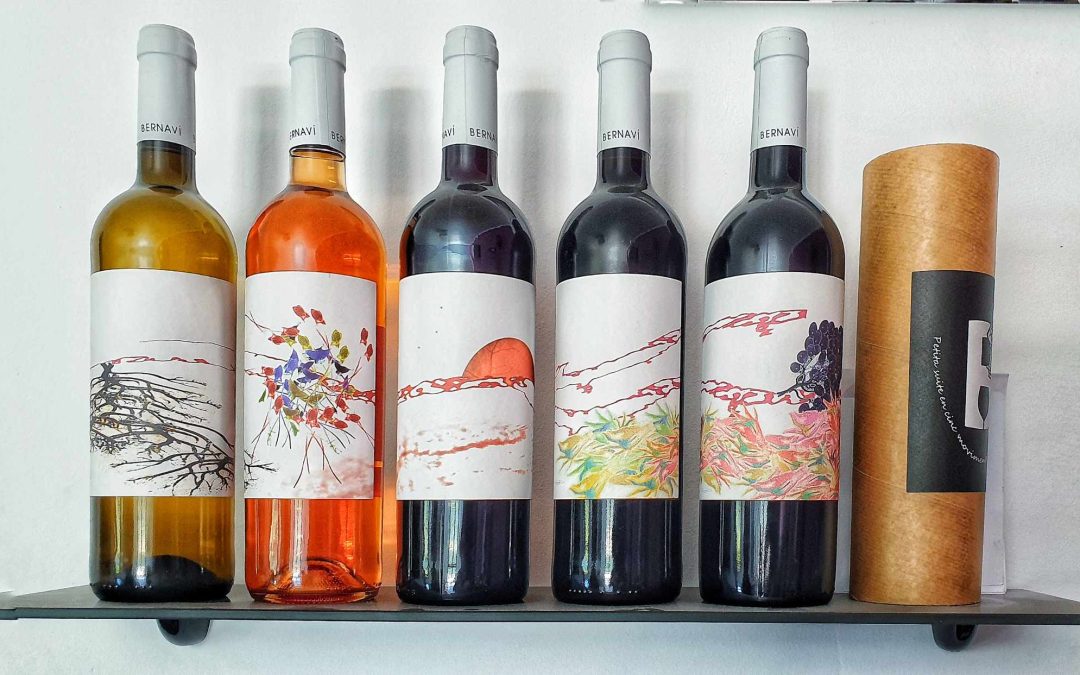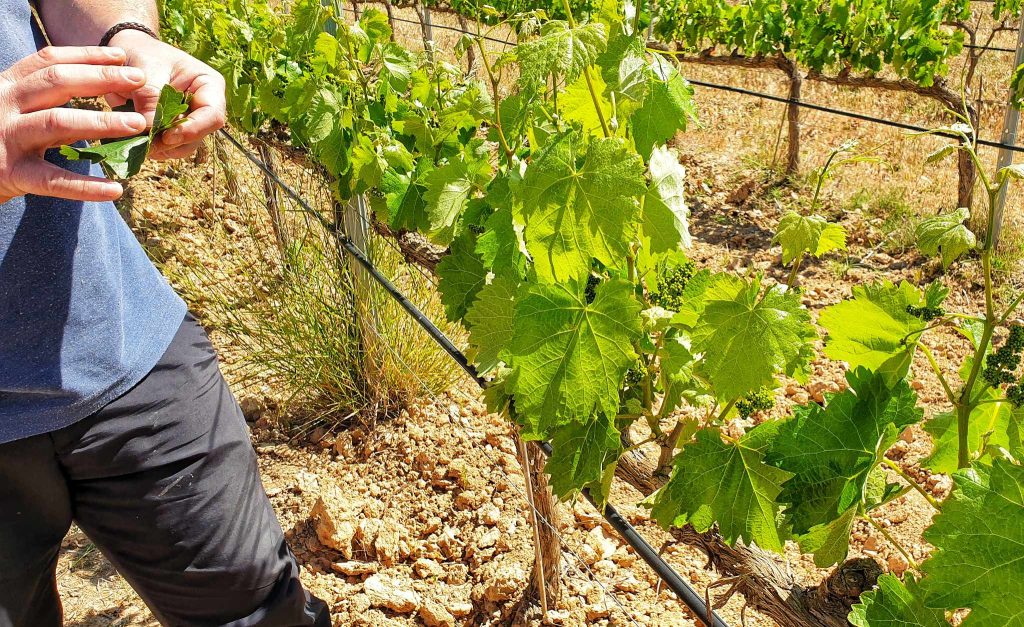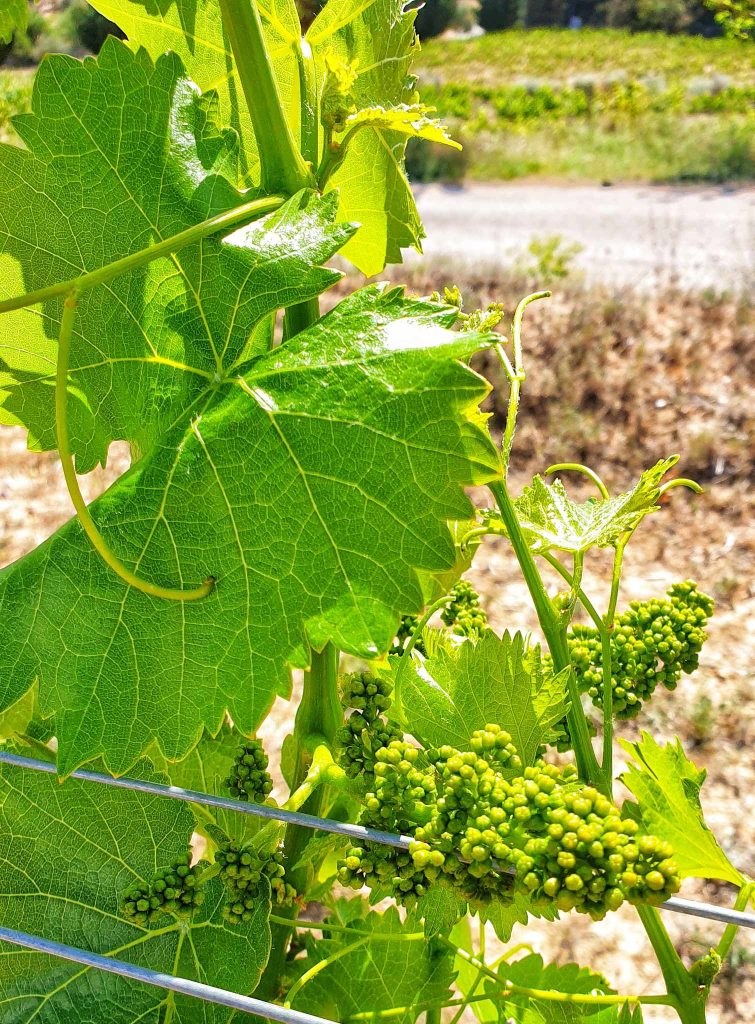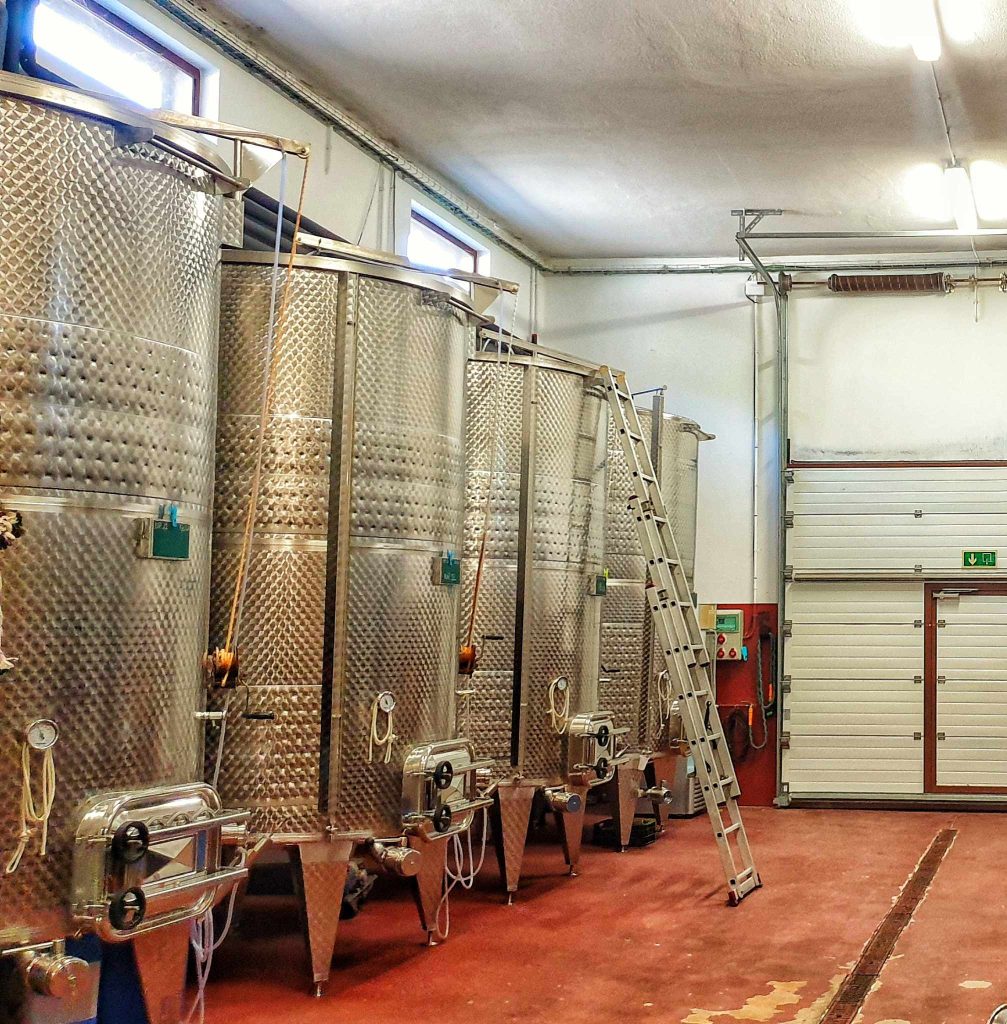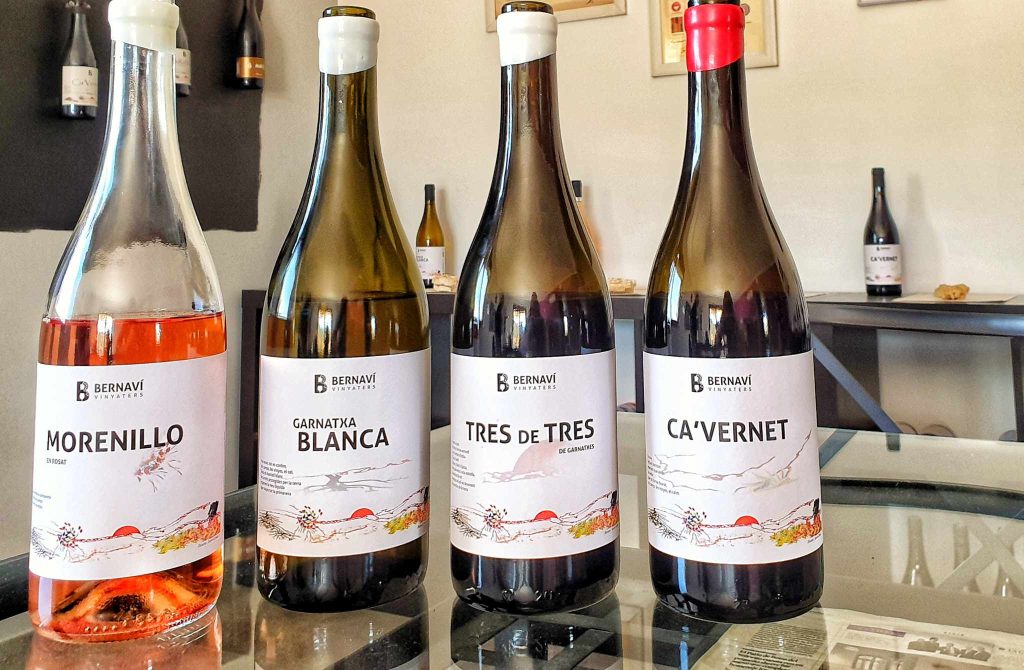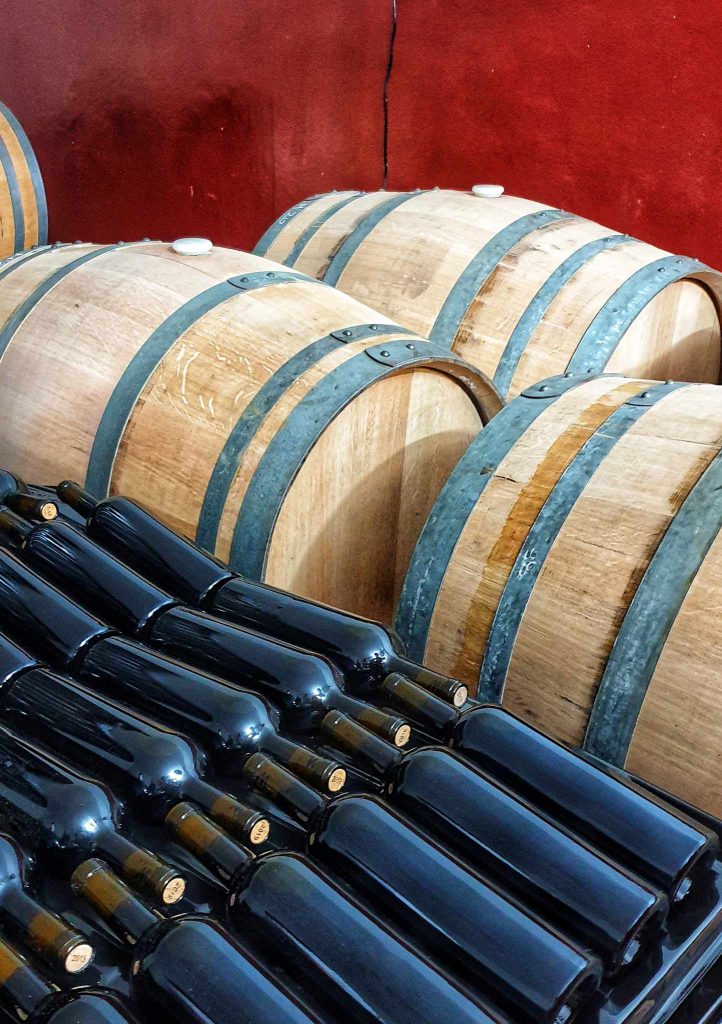There are wine tastings…and there are wine tasting experiences.
Living close to the river Ebro in southern Catalunya I am surrounded by olive trees, orange groves and vineyards. You don’t have to go very far to find a bodega or a wine producer who will offer a tour and a tasting of their produce and so far, each one has been a great experience. Even when I was away and travelling the world I would manage to get in at least one trip to a vineyard each time that I returned to Spain.
Some friends of mine have long been extolling the virtues of a particular vineyard called Bernaví. The nearest big town is Gandesa which is in the Terra Alta region, and six months ago I finally got there myself. I certainly wasn’t disappointed and I enjoyed it so much that I returned a second time a few weeks ago, taking along a couple of good friends who were staying with us for a short holiday.
Pulling up in the car outside an unassuming building on a windy but sunny morning we were warmly greeted by Marco who is one of the owners. Marco is Italian and together with his Catalan wife Ruth and his brother Gino they purchased the Bernaví vineyard back in 2007. The place had long been abandoned but they replanted the land and they have been improving and nourishing their land ever since. Their vision was to establish and maintain a sustainable and ecologically sound vineyard producing quality wines and as we walked outside among the rows of vines, Marco explained their vision and the process of their wine making to us.
The majority of wine tastings in Spain focus on the drinking, but Marco was keen to impress upon us that the secret of the wine begins outside; with much of the magic happening even before the grapes reach the vats and the barrels. Here at Bernaví they farm in an artisanal way, picking by hand and with as few interventions as possible and visitors are taken outside so that they can see this for themselves. Standing in the field we could see how the weeds are allowed to grow along alternate rows where they provide ground cover, nutrients and shelter for insects. Alternate rows are kept clean, with bare earth and the vines are trained along a series of wires so that the leaves face the sun. This enables them to turn as the sun moves around in the sky much like solar panels do.
As we walked slowly around together, Marco explained about the different grape types and the wines that they produce at Bernaví, and although despite taking notes, I have to confess that I will not be able to give you too much technical information here; we did after all, move on to tasting the products! However (and I hope that I have this correct) there are 70,000 individual plants here, all of which are cared for by hand and this small team produce 65% of the world’s Terra Alta wine which equates to 35,000 to 50,000 bottles depending on the harvest.
Morenillo is a grape variety that is native to the Terra Alta region yet it is quite a specialized crop. For all of you aficionados out there, the other vines which form the larger proportion on this bodega are the more common garnaxia blance or granache blanc. Many of the wines are sold locally, although much is exported to Belgium, the Netherlands and the United States, but less so to Spain where Catalan wines are not usually received well. (There is a lot of political history between Catalunya and Spain and you can read a bit of my experience on one specific event that happened a few years ago – click this link)
Moving inside and into the cooler air Marco showed us the large stainless steel vats, the different types of barrels that are used depending on what final properties of the wines are required and the corks which are called ‘technical corks’. I have to admit that prior to this conversation I had assumed that those strange corks with the waxy texture are plastic and whilst some might be, Bernaví use true cork, but one which has been manufactured in a specific way so that there is less chance that a bad batch can contaminate the wine.
Going upstairs, we got on to the serious business of tasting the wine.
The wine tasting
- We began with the Morenillo, a rosé wine which Marco explained had a slightly salty taste which makes it ideal for pairing with sushi among other things. This ever so subtle flavor is due to the gypsum in the soil and whilst I always think it can be quite amusing how some wine buffs come up with weird and wild descriptions for the flavours of wines, this really did dance on the tongue like a light salt.
- The Granaixa Blanca started off with the first sip giving the delicate taste of white fruits like banana and pineapple and then evolved through anise to apples and pears, perfectly fitting the description of ‘life in the bottle, life in the mouth.’
- Tres á tres is composed of a trio of ganaxas; a hairy one, a red one and a white. I seem to recall that hairy related to the vine leaves but by now my focus was less on my note taking and more on the glass in front of me! This fresh red perfectly complements fish such as salmon and tuna after having spent four months in the stainless steel vats.
- We completed our tasting session with the Ca’vernet, a beautiful red which spends 24 months in barrels followed by 8 months in the bottle before being opened and is totally delicious with cheese.
For me, the most fascinating part of any experience is the human side of a story and when my friend Annie commented on some of the beautiful labels on a set of bottles that were on display we were treated to a lovely history about how the designs had come about.
Marco, Ruth and Gino had set up a parallel project to introduce some of their blends into restaurants and an artist/designer friend, Javier Comas Carrasco offered to come up with something a little different. He was sent the five different wines with no identification or details and came back with a truly inspired design.
The labels depict the stages of the vines through the seasons and creatively link them to the human body. I will do my best to explain it here.
Winter is represented with a drawing of brown bare roots that take the form of the arteries of the body, the kidneys and salt. Spring is all about re-growth and the uterus, summer is centered around the hot sun and the eye because this is the time of the year when the growers have to be the most vigilant. Autumn has colourful leaves which, when you look closely take the form of the hands which will pick the grapes, and the grapes themselves which are small boobs!
A final creative touch is that when all of the bottles are lined up in the correct order, an irregular red line along the upper part of the labels forms the outline of the skyline of the Terra Alta region.
Environmental problems
One thing that really resonated with me on our visit was the modern day worry about the increasing lack of rain. Spain, along with much of Europe is entering a period of drought and extremely raised temperatures and whilst many people deny that climate change is a thing, the farmers who are so closely bound to the land do recognize it.
Marco explained how no snow fell at all last winter, yet how beneficial snow is to the vineyards. Snow slowly releases moisture into the soil as it melts and it fills the cisternas (water storage tanks) but this year with higher temperatures, no snow and hardly any rain they are already transporting water in by tanker. That is a worry both from a cost perspective and because they will need to manage the irrigation manually. Nature (usually) used to deliver just the right amounts of water when it was needed at each growing stage but there is now also the increased risk of wild fires to contend with which, fanned by the stronger than normal winds, threaten everything.
This year in Catalunya there have already been some large wild fires, starting much earlier in the season than would normally be expected. Higher temperatures and less water will mean less grapes, less wine and higher prices which is being reflected right across the land and with all the crops that are grown.
As I hope you can tell, time spent at Bernaví is not simply about tasting the wine, but is about experiencing the human story and the passion that each of the owners have for their land, their grapes and their wines. I really hope that this passion and enthusiasm will rub off on you and just like me you will appreciate your next glass of wine from a different perspective.
For a better and more comprehensive explanation of the wine production, the labels, the grapes themselves or simply just the opportunity to experience some very nice wines you can contact Marco, Ruth or Gino at Bernaví and book yourself a tasting session.
Address: Finca Mas Vernet, Camí de Berrús km.4, 43782 Vilalba dels Arcs, Tarragona
Contacts:
+34.651031835 – Marco
+34.619014194 – Ruth
+34.689341522 – Gino
e-mail: info@bernavi.com
skype: celler.bernavi
Directions: To get to Bernaví you need to leave Vilalba on Carrer Vall de Sant Isidre and follow the dirt track Camí de Berrús as indicated in the map above. Beware: By default Google Maps sends you down a different path apt only for mountain goats but not cars.
If you want to read about some of the other things that you can do in this small part of Catalunya, click this link.
Note: This is not a sponsored post. These are my personal opinions and I received no financial gain for this article.
